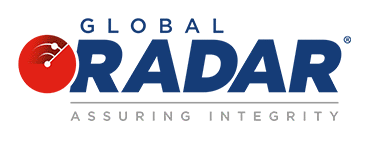A major growth area in U.S. Finance is in regulatory compliance, and this is due in large part to the rapid rise of money laundering activities over the past several years. With the rise of regulatory practices becoming strictly enforced at both the national and international level, financial institutions are faced with the fact that AML software that was once viewed as an unnecessary luxury for the company has shifted to an essential component in every-day operations. A growing trend in this field is the need for an efficient and comprehensive anti-money laundering program, which is at an all-time high.
The primary driver for the growth in usage of AML technology and the related programs are regulatory for the most part. While factors of implementation of these AML programs for financial institutions include the need for customer protection, as well as reduction of reputational risk for the institution itself, regulatory pressure plays perhaps the largest role at the international level. With increased pressure being placed on banks and other entities, these institutions are now more motivated to monitor daily financial activities and search for negative trends in their industry, as well as evaluate their customers in general. This leads to a promotion of security at all levels of operation, and can reduce financial crime exponentially.
Growing AML Costs
The amount of money companies are spending on their respective AML programs and compliance obligations has reached its pinnacle as well. Figures from Research and Markets estimate global spending on AML processes are set to grow to more than $8 billion by 2017. This rise in spending has come largely as a result of the various fines and settlements for banks that were not in compliance with AML regulations, a figure that had grown to upwards of $13.4 billion in 2014 alone. In order to avoid falling victim to both financial crime and monetary fines, greater significance is being placed on compliance processes. This is evident in Ovum’s annual ICT Enterprise Insights survey, which showed that 55 percent of retail banking respondents surveyed expected AML-related IT budgets to grow in 2016 (Demby, 2016).
The areas of greatest AML budget investment since 2014 include enhancement of transaction monitoring systems, reviewing, updating, and maintaining KYC, and implementation of FATCA, among others. The investment in enhancement of transaction monitoring systems comes as no surprise, as financial institutions are constantly searching for automated monitoring software that can reduce the manual load being placed on compliance departments. Similarly, the continual changes seen in KYC standards have led to greater emphasis on investment into customer due diligence and what it entails, as well as how to keep their KYC requirements up to date.
Repercussions of Increased AML Spending
With the increased intensity of regulation, and the threat of fines and sanctions constantly looming over businesses, some institutions have been hindered in terms of their potential growth outside of the compliance department. The need for investment in regulation processes has surpassed that of growth and development of other areas and projects that were previously crucial in respective company’s landscapes. A recent survey released by the American Bankers Association found that more than 46 percent of American small banks surveyed said that due to regulatory compliance burdens, they had to reduce their product offerings, including loan and deposit accounts. The survey also found that customer service had suffered because of higher compliance costs, as community banks struggle to comply with fewer staff and much smaller budgets (Trulioo, 2015).
Over the past several years, the goals of financial institutions have truly shifted to trying to find a “happy medium” between focusing on quality of compliance expenditures while also trying to control costs, and this is a process that clearly has not been mastered to date. However, the need for advanced compliance solutions is continually increasing in the financial spectrum, a trend that does not seem to be ending any time in the near future. Financial institutions must now attempt to find a way to optimize their efficiency and cost-effectiveness at the same time.
Sources:
https://www.trulioo.com/blog/are-compliance-costs-hurting-banks-bottom-lines/

